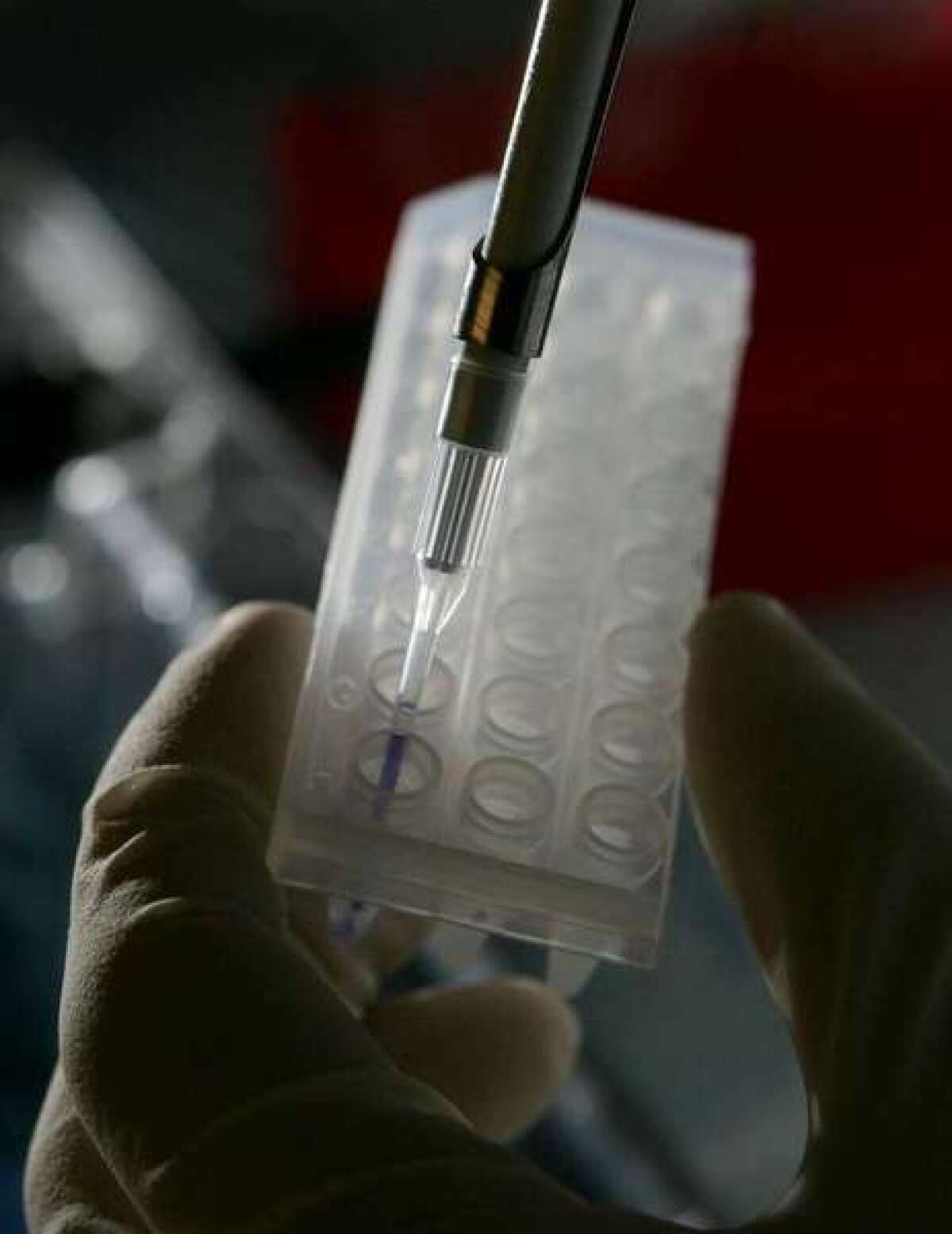Researchers hail Supreme Court decision on gene patent

- Share via
The U.S. Supreme Court decision that Myriad Genetics cannot patent two genes linked to ovarian and breast cancer came as welcome relief to researchers whose work on BRCA1 and BRCA2 genes had been thwarted by legal challenges from the company.
But while researchers and clinicians no longer will receive cease-and-desist orders from Myriad, they will have to labor for years to catch up with the data and analysis the Utah-based company has been able to accumulate during the 17 years it held a U.S. monopoly on analyzing the genes, said Eric Topol, director of the Scripps Translational Science Institute in La Jolla.
The company’s patent would have expired in 2015, anyway, Topol added.
“This is like a non-issue for them because they own the treasure chest” of information, he said. “They’ve been mission control for all these years and I don’t think people realize that.”
Myriad has been conducting tests on about 250,000 women annually, including relatives of clients seeking the testing, Topol said.
Mining the vast collection of data could allow scientists to map variations in patient DNA to clinical outcomes — for instance, whether a woman with a particular version of a gene develops breast cancer, and how that cancer behaves. Doing so could increase researchers’ understanding of how and why genes cause disease.
The court’s decision did not address all the data and analysis.
“The monopoly is over as of today, which is great, but when we at Scripps or any other place now do sequencing of those genes, we’re not going to know in a lot of cases if what we find is meaningful or not,” Topol said. “It’s so rich, what they have, and it will take a long time to try to simulate that body of knowledge.”
Stanford University cardiologist Euan Ashley, whose laboratory studies the genetic basis of heart disease, said the decision clarified “nobody can have a monopoly of simply using the sequence of the gene. That opens up genetic diagnosis that will facilitate genetic medicine and personalized medicine in a very powerful way.”
Clinics and researchers probably suffered more during the monopoly, Ashley said. But research also slowed significantly.
“People were a bit wary of doing research on those genes because it was very clear that they were covered by this intellectual property in a very high-profile way and many clinical labs had received letters from Myriad,” he said. “Even small operations had received letters from Myriad warning them off.”
Both researchers called on Myriad to release its data and analysis of the populations that carry variations of the genes.
“To know what the population variation is in that gene is incredibly powerful and useful and important,” Ashley said. “It will take the rest of the community some time to catch up by pulling together populations that have that gene sequence.”
There is some hope, though, Topol said. In Europe, where Myriad’s patents were limited in scope, about 70 institutions have gathered data on the genes. And an effort is underway at UC San Francisco to get women who have had test results to provide them to scientists.






